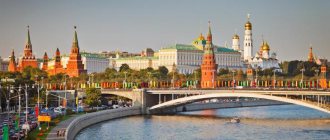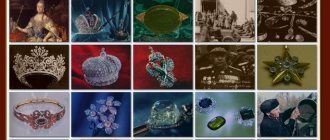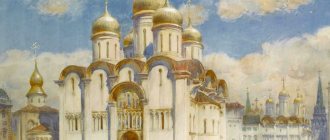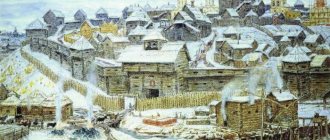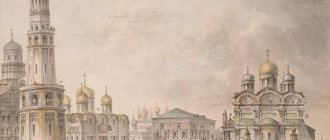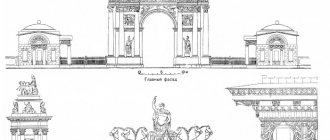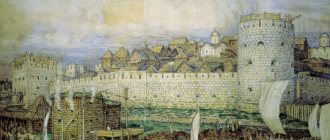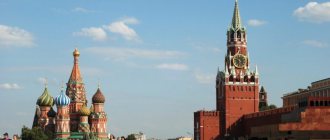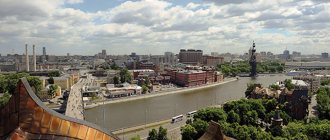+1
The Diamond Fund is a unique exhibition of priceless exhibits, located within the boundaries of the Moscow Kremlin. The exhibition presents masterpieces of jewelry craft from the 18th-20th centuries, one-of-a-kind specimens of precious stones and samples of precious metals. Each inhabitant of the exhibition has artistic, material, but primarily historical significance. The exhibition began its work in 1967 in the Armory Chamber, but the first collectible items were collected by Peter I. Now the doors of the exhibition are open for visits by everyone according to the established visiting regime.
Story
The roots of the creation of the Diamond Fund go back to the reign of Peter the Great, when, based on a decree of 1719, a state organization responsible for the safety of imperial jewelry and royal relics began operating. The Chamber Collegium had a complete list of orders, all kinds of decorations, gifts to royalty, and state regalia. The procedure for storing them in St. Petersburg was also described here.
In fact, by his decree, Peter I recognized and legally defined the treasury, or, in other words, the Imperial Renteria, as the repository of the most significant values of the imperial court, belonging to many generations of royal families. During the reign of each subsequent monarch, the treasury was constantly enriched, but the contribution of Elizabeth and Catherine II was more significant. During their reign, the Russian court was distinguished by amazing luxury and was considered one of the most magnificent in Europe.
In particular, under Catherine II, the treasury was replenished with unique examples of gems and precious stones, as well as the most important symbols of power. In 1764, in the former bedchamber of the empress, to preserve the property, a separate chamber was built, called the “Diamond Room,” where priceless exhibits lived for a long time.
At the beginning of the First World War, the contents of the treasury were hastily transported to Moscow and placed in the Kremlin Armory. A little later, a complete inventory of the items in the collection was made, their value and greatest cultural significance were confirmed. In 1924, the treasury was designated as the country's Diamond Fund and transferred to the custody of the State Repository of Valuables.
First half of the 18th century
In 1719, Emperor Peter the Great issued a decree on the creation of the Diamond Room. Jewels belonging to the imperial crown were supposed to be kept here. A specially created Chamber Board conducted an inventory of existing valuables - symbols of royal power - and determined the order and place of storage. A little later, these requirements extended to the rest of the royal jewelry. Each subsequent board made adjustments to the rules drawn up.
- 35 best museums in Moscow
- Sights of Moscow
- Sights of the Moscow Kremlin and Red Square
Second half of the 18th-19th centuries
A special room was allocated for storing crown jewels. This was usually the bedroom of the emperor or empress. This room became known as the Diamond or Diamond Room. During female rule, crown jewels became especially expensive and exquisite. The bedchamber of Catherine the Great became the most expensive personal office in the history of the Russian Empire. The famous architect Felten was invited to create an interior matching the jewelry.
First half of the 20th century
At the beginning of the twentieth century, the front turned out to be quite close to the capital of the empire. Therefore, it was decided to evacuate the Diamond Room to Moscow. Despite the rush, the event was carried out with special care and attention to rarities. The 1898 inventory was even preserved, which later served as the basis for further research.
At this time, the following documents were added to the crown values:
- genealogical book of the ruling dynasty
- family wills
The valuables moved to the Armory Chamber (the crown hall) of the Kremlin.
- Armory Chamber of the Moscow Kremlin
Second half of the 20th century – beginning of the 21st century
Until 1967, crown jewels were not exhibited to the public. Only in November 1967, for the anniversary of the revolution, the government decided to organize a temporary exhibition. It was shown to guests who came to Moscow for the celebrations. It was assumed that the rarities would be exhibited for a year and then returned to permanent storage. But in a short time the exhibition became very popular. Therefore, the government decided to organize a permanent exhibition.
By this time, the Gokhran collection received new storage units:
- diamonds found in the new Mir and Zarnitsa deposits
- works of talented jewelers of the New Age
- nuggets of gold and platinum
Along with the crown jewels, the unique Mineralogical collection collected by Catherine the Great is available to the public for inspection.
- 20 best excursions for schoolchildren in Moscow
- 23 best Moscow museums for children
- 30 best things to do in Moscow for kids
Without a guide - Skip-the-line tickets to the Kremlin territory
Do you know that during the year the walls of the Moscow Kremlin are “stormed” by about 3,000,000 tourists. Imagine if each visitor takes a pebble from an architectural structure as a souvenir, in a couple of years there will be nothing left of the historical reserve.
In order to preserve ancient monuments, visits to the Kremlin walls are limited. To bypass the queue and get into the Kremlin during open hours, electronic tickets and vouchers have been invented. You can buy them online. This convenient modern option will allow you to go to the very heart of our capital without tiring expectations.
Skip the line: Kremlin territory and temporary exhibitions with audio guide
On any day except Thursday, you can order a ticket to the Kremlin without queuing and receive them at a separate ticket office. This is a special voucher for visiting Cathedral Square worth 1,375 rubles per guest.
The very heart of Russia.
The program called “Skip the Line: Kremlin Territory with Audio Guide” allows you to get to the very center of the capital without delay. Outside the walls you will see the Assumption and Archangel Cathedrals, old churches and princely chambers. The time spent on the territory of the Kremlin with a voucher is not limited.
Entrance voucher to the Kremlin Cathedral Square ensemble (without excursion)
Want to avoid a long line before visiting the main historical center? Book online “Entrance voucher to the ensemble of the Kremlin Cathedral Square (without excursion)”, save time and money. Ticket price when purchased online is 1,429 rubles per visitor.
Cathedral Square. With a voucher you will skip the line and see the main attractions of the Kremlin.
The voucher will give you the opportunity to see and capture 5 unique temples, the Princely Chambers, the Tsar Cannon and the Tsar Bell without any hassle. Visiting days: daily, except Thursdays, until the museums close.
Find out the nuances from the review of Kiev resident Kristina Dubenko about using an electronic entrance ticket to the Kremlin in Moscow:
“I ordered it online first for my parents. They really liked it and said that they wanted to visit the Kremlin again on Saturday using an electronic ticket. It turns out that these days there is a separation of horse and foot guards. We all walked together. So spectacular, it was as if I was on the set of a historical film. The children froze in amazement and looked wide-eyed. There are two drawbacks to this event - there is no guide and the lockers operate intermittently. We waited 15 minutes to pick up our things, but during this time the guys found an old coin, which they took from the Kremlin as a souvenir.”
Diamond Fund today
The doors of the halls were opened in 1967. And although the display of exhibits was initially intended to be temporary, the event became a major phenomenon in the cultural life of not only the country, but the whole world. Therefore, by government decree, it was decided to transform the exposition into a regularly operating exhibition, open to everyone.
Today the unique exhibition is located in two rooms. In the first you can see the following exhibits:
- rare gemstones
- samples of gems from all regions of the country
- masterpieces of jewelry craftsmanship created by contemporaries
- one-of-a-kind precious metal nuggets and giant diamonds
- map of the USSR from a selection of precious stones
The second hall contains exhibits of predominantly historical significance, including symbols of power and other relics. Here you can also find works by jewelry masters of the 18th – 19th centuries.
Exhibits from the Kremlin Diamond Fund
Today everyone can see magnificent objects of national heritage. The unique collection of jewelry is under reliable protection; free inspection of the exhibits is not allowed.
The exhibition presents several sections:
- Imperial regalia of the House of Romanov;
- Orders decorated with precious stones;
- Jewelry from the 18th-19th centuries;
- Works of modern masters;
- The largest nuggets of gold, platinum, precious stones;
- Uncut Yakut diamonds;
- Ural gems;
- Jeweled items of clothing.
The treasury consists of two halls. Excursions take place in a strictly regulated manner. Each collection is placed in a separate showcase under armored glass. An employee of the foundation leads visitors to each display case, tells the history of the exhibits, and then gives them a couple of minutes to independently examine the items.
Exhibition collection
A collection is a collection of unique items that have not only material, scientific and artistic value, but also historical value.
Here you can see:
- jewelry
- collection of precious stones
- collection of amazing nuggets
- orders
The fund is part of Gokhran. This is not only an interesting exhibition. Research work is being carried out here. Therefore, excursions conducted by employees are extremely interesting.
- What to see in Moscow first - 16 most interesting places
- 25 best excursions in Moscow
Coronation regalia
Coronation regalia are rarities that, in their time, showed the wealth and importance of the empire. They are known all over the world. The collection contains:
- Large Imperial crown. It was made by jewelers in record time - in just 2 months. This is an example of grace and wealth. The crown contains about 5,000 diamonds, pearls brought from India and spinel weighing about 400 carats. Eckart and Pozier worked on the decoration.
- Power. It was also made by Eckart for Catherine the Great. This is a modest, at first glance, ball, which is surrounded by a chain of diamonds.
- Small Imperial Crown.
- Scepter.
- Order of the Holy Apostle Andrew the First-Called (star and chain).
- Agraf buckle.
These items can be seen during a visit to the exhibition.
Mid-18th century
Experts can easily distinguish the works of jewelers of this historical period. The products convey joy and light, they are characterized by asymmetry and careful execution. The pearl of the exhibition is the bouquet of Empress Elizabeth Petrovna. These are flowers made of precious metals and stones - irises, forget-me-nots, daffodils and rose hips.
The stems are so thin that at the slightest movement they tremble and bend, just like in a bouquet of fresh flowers. In order to fill the product with color, the master placed thin sheets of bright foil under each diamond. The iris bud has a pale lilac diamond set into it. This is a rare natural mineral. Its weight is almost 16 carats.
Second half of the 18th century
Photo: Sergey Pryanechnikov
At this time, the skill of jewelers reached its apogee. They skillfully handled cutting, emphasizing the natural beauty of precious stones and the play of light. Historians call the second half of the 18th century the century of the diamond. Guests do not pass by the porta bouquet. It is made of gold coated with green enamel.
The role of the thread is performed by a belt of diamonds. The belt is so elegant that it creates the illusion of soft fabric. The entire composition is intended for wearing fresh flowers. The internal cavity was filled with water, which fed real plants. The portbouquet is equipped with a clasp that securely held the product on the evening dress.
First third of the 19th century
During this period, tiaras came into fashion in the Russian Empire. They had a triangular shape, as if repeating the traditional kokoshnik. It was at this time that products from the houses of Boucheron and Cartier became popular. The traditions survived until the beginning of the twentieth century. They became so integral to the life of the country's high society that they were called Russian tiaras.
The diadem of Maria Feodorovna, wife of Emperor Pavel Petrovich, stands out in the exhibition. The tiara fully corresponds to the Russian triangular kokoshnik. Diamonds are drop-shaped and mobile. When the Empress turned her head, the diamonds shimmered with bright light. The main feature of the product is the pink diamond. Its weight is more than 13 carats. The gem is located in the very center of the tiara.
Historical stones
The exhibition presents 7 diamonds that are known throughout the world. Among them are 4 gems and 3 diamonds. The most popular exhibit is the Orlov diamond, crowning the coronation jewel - a scepter made for Empress Catherine.
The second most popular rarity is the rare emerald of the crown of the Grand Duchess, wife of Grand Duke Constantine. It has a mixed green and blue color. An emerald is inserted into a brooch. It is surrounded by a garland of grape leaves with diamond inserts. Presumably, the gem was found in Colombia in the 15th-16th century. It was transported to Europe by the conquistadors.
- 22 best Moscow parks for walks
- 20 most beautiful places in Moscow
- 20 most interesting places in the Moscow region
Gems
The collection of the foundation has a rich exposition of gems. Minerals boast not only uniqueness and elegance, but also a complex history. Raspberry tourmaline, similar to a bunch of grapes, was successively owned by different royal houses. Researchers suggest that the birthplace of the rarity is Burma. Then the mineral’s journey began:
- Initially (after moving to Europe) it was the property of the wife of King Charles 9 of France.
- After the death of the owner, the mineral passed to the heir, King Rudolf of Bohemia.
- During the Swedish War, tourmaline became a spoil of war, and its new owner was Queen Christina.
- After the death of the monarch, the mineral remained the property of the Crown of Sweden.
- During his visit to St. Petersburg, King Gustav presented tourmaline to Empress Catherine the Great.
Diamonds
It is a widely known rule to assign proper names to found minerals whose mass is more than 20 carats. Usually diamonds are named in honor of some historical date, memorable event or the name of a famous person. The collection has not only material, but also artistic value.
Minerals found on the territory of Russia at different times allow scientists to determine the conditions of their formation as accurately as possible. An interesting diamond is the XXVI Congress of the CPSU, which was found in 1980 in the open Mir kimberlite pipe. The rarity was named in honor of the future XXV1 Congress of the Communist Party of the Soviet Union.
Orders
In Tsarist Russia, special honor was given to the orders that were awarded to members of the imperial family. The best jewelers worked on the products, using unique jewelry and the purest metals. Therefore, such orders differ significantly from similar ones. The most famous among the artifacts is the Order of St. Apostle Andrew the First-Called.
The award was established by Peter the Great, and until the October Revolution it had the highest dignity. The Apostle Andrew was the first to come to the lands where the ancestors of the Russians lived, carrying a cross. His image is placed on the coat of arms of the Russian Empire. The Order of St. Andrew the First-Called became not only the highest award, but also one of the symbols of power of the Romanov dynasty.
Nuggets
Since the 19th century, Russia has been the largest country in the field of gold mining. But found nuggets are rarely preserved unchanged: they are sent to a smelter. The exception is the largest ones: they add to the collection of rarities.
But it is important to understand: nuggets have not only material, but also scientific value. The fund's employees study their composition and draw conclusions about the value of a particular deposit. They have 101 exhibits at their disposal. Visitors are attracted by the Camel nugget. Its weight is more than 9 kg. It really resembles a dromedary camel. The rarity was discovered in Kolyma in the 40s of the last century.
Precious stones of the Diamond Fund
The tour opens with a showcase that attracts emeralds, topazes, and tourmalines.
In the next three exhibitions of the Kremlin Diamond Fund, Soviet uncut diamonds—jewelry and industrial—shimmer. Three thousand carats (5 kg) of natural stones were presented to the excursion customers. Diamonds are more often found in kimberlite pipes - huge craters that go deep into the earth. The rocks were named after the city of Kemer in South Africa. The pipe was first found in 1867. According to the tour guide, the rock is quite rich - there is 1 carat of diamond per ton of kimberlite.
Typically, excursion participants mark a map of Russia lined with small diamonds. The red ruby represents Moscow, the brown stones represent the Ural Mountains. The first diamonds were found in the Urals in the 19th century. The black diamond symbolizes the city of Mirny, the center of the diamond mining industry of the Russian Federation. The first Yakut kimberlite pipe, discovered in 1954, was named “Zarnitsa”. Today, more than 200 deposits have been found in the republic; every 4th diamond in the world is of Yakut origin. A single crystal represents the Arkhangelsk deposit of 10 million carats, mined since the eighties of the 20th century.
The second showcase of the Moscow Diamond Fund contains a unique collection of large gem-quality diamonds from Yakutia. Gemstones larger than 20 carats are very rare. Large diamonds receive names associated with the history of their discovery or historical events. For example, on the right, an absolutely transparent stone weighing more than 25 carats is named after Yuri Gagarin, on the left, the “Free Russia” diamond is 32 carats.
In the center of the exhibition, a golden-colored crystal was named in honor of Alexander Sergeevich Pushkin, 32.2 carats.
A little higher, a large golden-brown diamond crystal weighing 342 carats was named “26th Congress of the CPSU”.
Unique is the diamond on a black round platform. The stone weighs 181 carats and is named after the 1980 Olympic Games.
Main exhibits
The list of the main and most impressive exhibits of the Diamond Fund includes coronation regalia:
- Large imperial crown. Prepared for the wedding of Catherine II in 1762. The authors are the court masters Pozier and Eckart, who managed to create a masterpiece in just 2 months. The crown was considered the main symbol of power until 1917. Each new monarch was crowned by her
- Small imperial crown. Created in the image of the Great Crown in 1801 for the second half of Alexander I - Elizaveta Alekseevna
- Imperial scepter. Completed in the early 1770s by order of Catherine II
- Imperial power. Created jointly with the Great Royal Crown on the orders of Catherine II. The additional name of the regalia is “Tsar’s Apple”
- Badge and star of the Order of the Apostle Andrew the First-Called. The award is considered the highest manifestation of gratitude for any merit in Russia
In addition to the symbols of power, seven stones deserve special attention, whose historical significance is not in doubt. The list includes:
- Shah diamond over 88 carats, uncut and bearing the inscriptions of three previous owners
- 25 carat flat diamond set in a bracelet with the image of Alexander I
- red spinel 399 carats crowning the Great Crown
- greenish-blue tint Orlov diamond 190 carats adorning the royal scepter
- emerald “Green Queen” 136 carats, placed in a brooch of Princess Alexandra Iosifovna
- giant sapphire from the island of Ceylon 260 carats, recognized as the largest on the planet
- giant olive-greenish peridot 192.6 carats
Already today, the fund’s collection has been replenished with diamonds found in Yakut mines. The main ones are the “Great Initiative”, “Big Dipper”, “Progress”, “50 Years of the USSR” diamonds and others.
Interesting Facts
During the time of Peter the Great, security measures were also observed. The renteria (a room for storing crown valuables) could only be opened on the instructions of the emperor. Three people had to be present at the same time: the rentmaster, the chamber-advisor and the chamber-president.
The first inventory was carried out during the time of Catherine the Great. Crown valuables were described, measured and entered into the register.
The Diamond Room was part of the royal chambers. Nicholas 1 transferred it to the category of office premises.
After the October coup, crown valuables were transferred to Gokhran by order of Lenin. For the inventory, the 1898 inventory was used.
In 1922, a special commission worked at Gokhran. The values were described anew. Some were declared unimportant for the state. Thefts and mediocre sales of rarities began. Only in 1936, on the orders of Stalin, did the barbaric actions stop.
Visiting rules
Visitors who come to view the exhibition are required to comply with the rules established by the administration:
- outerwear is checked into the cloakroom, hand luggage or luggage - into the storage room, weapons - into the Kremlin commandant's office
- inspection takes place only as part of an excursion (group of 20 people); foreign visitors can get acquainted with the exhibition on their own with the help of an audio guide
- entry is by ticket
- a ticket with corrections or erasures is considered invalid
- Visitors are prohibited from making noise, running, drinking drinks, smoking, or eating during the inspection;
- It is recommended to switch phones to silent mode
- It is prohibited to conduct video and photo shooting, sketch exhibits, record the text of the excursion (including on a voice recorder)
- It is forbidden to conduct your own excursion
- It is prohibited to litter on the exhibition territory
- It is prohibited to carry flammable and explosive substances, as well as objects that could cause damage to the exhibition or visitors
Citizens who disregard the established rules are subject to removal from the exhibition area. It is recommended to purchase tickets at the Moscow Kremlin box office. The administration does not guarantee attendance at the exhibition with tickets purchased on third-party platforms.
What you need to know before visiting
To ensure that the pass system does not leave a negative impression, take care to follow the rules for visiting the Diamond Fund:
- You are not allowed to have photo or video equipment, mobile phones, or metal objects with you.
- Large luggage should be placed in the storage room in advance, and outerwear should be placed in the wardrobe.
- The electronic ticket must be exchanged for a paper ticket at the ticket office.
- During vacations, weekends and holidays, the demand for viewing the Diamond Fund exhibition increases significantly, and changes in operating hours are possible. The official website of the Diamond Fund contains up-to-date information.
How to get there
The exhibition is located on the territory of the Moscow Kremlin. You can get here on foot from the Borovitskaya, Aleksandrovsky Sad, and Biblioteka im. Lenin". Entrance to the Kremlin through the Borovitsky Gate. Children under 6 years old are not allowed to attend the exhibition. Photo and video shooting is prohibited here. It is also recommended to turn off mobile phones before starting the tour.
The exhibition opening hours are from 10.00 to 17.20, except Thursdays. Sessions are held at intervals of 20 minutes. From 13.00 to 14.00 lunch break. Tickets cost 500 rubles. For schoolchildren, students and pensioners, upon presentation of supporting documents - 100 rubles.
The exhibition “Diamond Fund” is truly considered a treasury of Russia. Unique and stunningly magnificent jewelry, precious stones, and royal regalia collected during the reign of Russian monarchs, starting with Peter the Great, are presented here. The exhibition continues to grow to this day, adding works by contemporary jewelers and unique stones mined in the country.
General rules of conduct in the Diamond Fund
The following rules must be observed during your visit:
- It is forbidden to speak loudly, make noise or disturb other visitors;
- Smoking cigarettes, including electronic ones, is prohibited in the hall;
- It is prohibited to consume food and drinks;
- The excursion is conducted by a guide; it is forbidden to interfere with his work.
Entry with suitcases, large shopping bags, and briefcases is also prohibited. The only exceptions are small handbags. Plus, you cannot take any type of vehicle with you: bicycle, scooter, skateboard. All things can be left in a special storage room in the Alexander Garden.
Visiting the Diamond Fund with animals is also prohibited. Outerwear must be returned to the cloakroom.
Treasures of the Diamond Fund
Diamond Fund of the Moscow Kremlin on the map
Exhibition Diamond Fund of the Gokhran of RussiaExhibition Center in MoscowMuseum in Moscow
- Tours to the Dominican Republic for 9-11 nights, 3-5* hotels, all inclusive from 113,812 rubles for TWO – November
- Tours to Ayia Napa (Cyprus) for 7 nights, 1 adult + 1 child, 3-4* hotels, breakfasts + dinners from 65,607 rubles for TWO – July
- New Year tours to Finland - visit Santa Claus
- Car rental in Spain
- 25 best museums in Vilnius
- All inclusive holidays in Crete
- Old Town Hall with Orloj chimes in Prague
- Tenerife hotels 4 stars 1 line all inclusive
- Kemer hotels with water park
- Uffizi Gallery in Florence
- Liverpool Sights
- Where to relax at sea without a visa in September - 20 best destinations
+1
Interesting facts about the Diamond Fund
Here are some interesting facts for the average exhibition visitor:
- The Diamond Fund is one of the most visited museums in Moscow.
- He is protected by the Federal Security Service , which also ensures the security of the President of the Russian Federation.
- Photography and video recording of exhibits is prohibited.
- Any exhibit can be excluded from the fund only by personal decree of the President of the Russian Federation.
- , the idea of creating the State Fund of Precious Metals and Stones of Russia belonged to Peter I. He actively attracted the best jewelers of Europe to this.
- One of the most striking exhibits of the exhibition is the imperial crown , made for the coronation of Catherine II. She weighs just over 2 kg.
A visit to the Diamond Fund allows you to personally get acquainted with the world's jewelry masterpieces. This is a great opportunity to significantly expand your horizons for both children and adults.
You can learn more about the Diamond Fund by watching the video:
